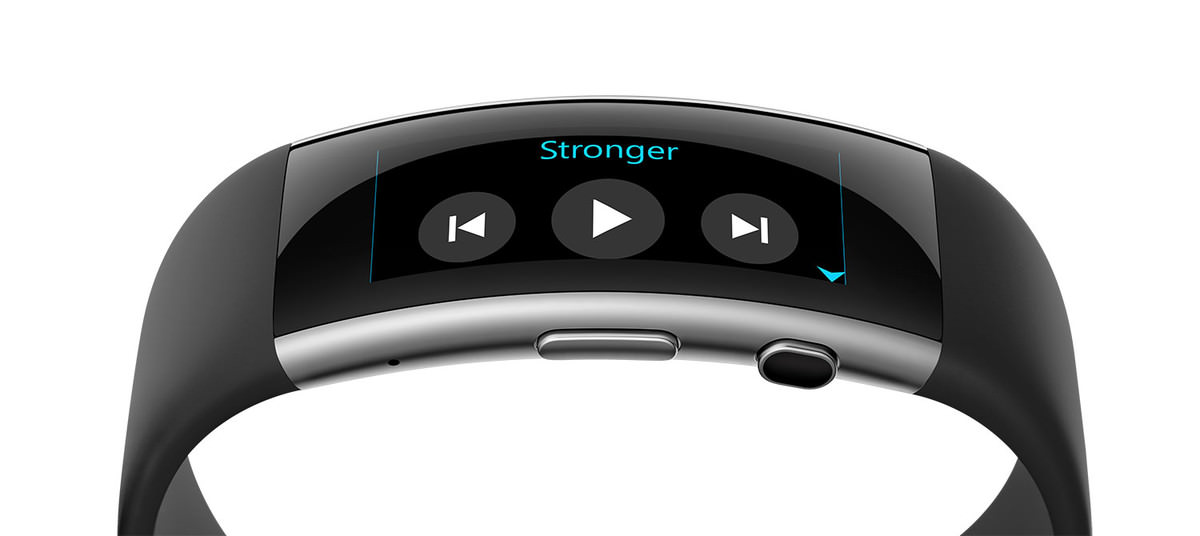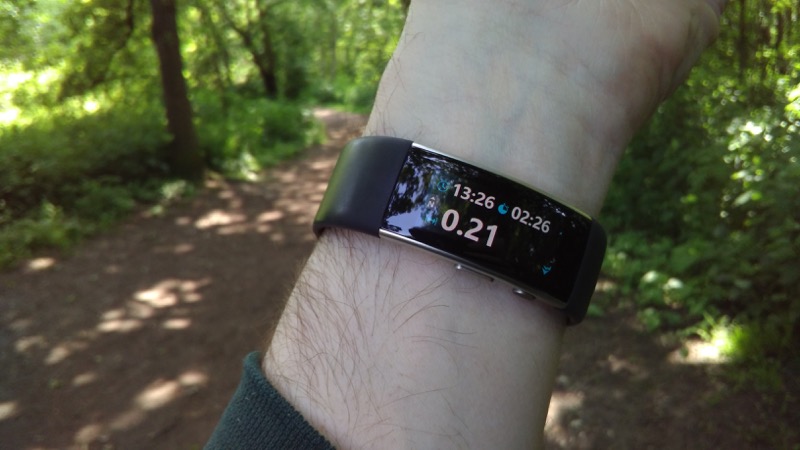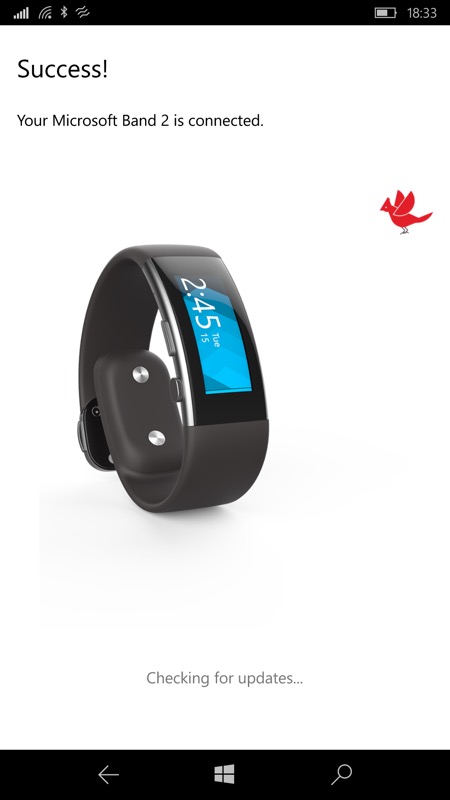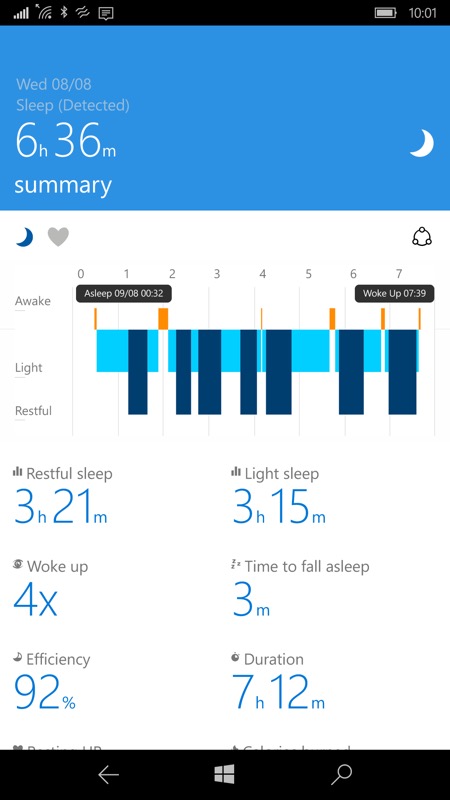
The story so far
- Microsoft launches the Band and a companion Microsoft Health service in October 2014.
- I review the Band in May 2015
- Microsoft launches the Band 2 in October 2015
- I review the Band 2 in November 2015
- The Band 2 gets music controls in December 2015
- The Band 2 gets an Explore upgrade in May 2016
- The Band 2 gets heart rate zone support in October 2016
- The Band 2 is dropped from sale and all plans for a Band 3 dropped later in October 2016
The Band saga only lasted two years in terms of ambitions and sales, then, and quite a while ago. Yet it remains the only official wearable/smartwatch from Microsoft for its own mobile platform and, as a result, the integration and reliability is significantly higher than for third party wearables, even the Fitbits. As an example of this, it's trivial to control your playing music on Windows 10 Mobile from your Band 2 - a double press on the action button and there are the controls you need. In contrast, you have to jump through a dozen hoops to enable the same on the Versa (so much so that I missed it completely in my otherwise full review!)

The Band 2 also had a full crop of sensors, including UV detection, something which is more important this year than in any other, I think. It was IP67 for water and dust resistance and I've taken it swimming (by accident) with no ill effects, though there's no real benefit since there's no detection of swimming strokes/lengths (as the Versa did). It was and is a tightly integrated Windows Phone and Windows 10 Mobile accessory with class-leading sensors at the time (GPS/heart rate/UV/barometer/skin temperature/galvanics) and which still look competitive today.

Why did Microsoft cancel the project?
Other than internal politics, which I won't go into here, three reasons:
- Reliability. The original Band (with the batteries in the strap) and the Band 2 (with lots of wires in the strap, so thinner, but still needing to be more substantial than your typical watch strap) suffered from reliability issues. Here's a typical sample, with the strap tearing at the boundary of the under-strap arced support and the more flexible section. Time before this happens seems to be about six months of daily use. So about 180 workouts, typically with sweaty skin and probably a fair amount of rain and physical abuse.
My own Band 2 has only had about 100 exercise sessions over three years because I chop and change hardware a lot, and my hardware is still perfect. Maybe I don't sweat enough, maybe I'm more careful with my tech, maybe this will all come to bite me in another 100 or so sessions? Regardless, a fitness-centric wearable certainly shouldn't degrade and break when a user is doing exactly what the gadget is designed for, at least not in the first (say) two years. Six months is just not good enough, and Microsoft never really got to the bottom of the material problems.
- Design. Following on from the first point, the idea of having the battery and sensors in the clasp and then running lots of wires through the strap portions has go down as an ambitious experiment. While Microsoft was trying this approach, every other maker of wearables was taking a more traditional approach to design, with all the electronics in the main watch/display. Yes, the latter had to be slightly smaller, thicker, and heavier, but the massive, overwhelming upside was that if the strap goes with wear and tear then you just attach a new strap, you don't have to replace the entire wearable.
- Appearance. There's no getting away from it. Every time I wear the Band 2 in public, I get comments about me wearing it wrong (the display's on the 'inside' of the wrist) and about how it looks "like a prison bracelet". In today's style-conscious world, something that looks like it belongs on the set of Blade Runner doesn't cut it. Probably. I don't mind the look, but I haven't managed to convince anyone else!
In view of these reasons, it's clear that Microsoft needed to go back to the drawing board - and it's not impossible that they in fact do this. How about a 'Microsoft Watch'? But I wouldn't hold your breath - the wearables space is already congested and profit margins aren't huge. Even Apple had to scale back its Apple Watch plans and prices.
Does the Microsoft Band 2 still work?
Absolutely. The 'Microsoft Health' application was renamed to just the 'Microsoft Band' app in the Store a while back and this still installs fine, works fine, and shows no sign of stopping working. As long as:
- the Band 2 itself carries on working
- your Windows phone carries on working
- the Microsoft Health dashboard on the web and the server-side health data processing is kept online
then there's zero reason why the pairing should carry on for months (years?) to come.
I guess the Microsoft Band application might get also get pulled in the Store, but unless you factory reset your phone your existing installation will carry on as normal, the other factors permitting.
As proof that this is still working fine, I've been using my Band 2 intensively over the last few days, with it still tracking sleep (automatically, so you don't have to remember to start the 'activity' when you're tired), still tracking runs and walks, still surfacing texts, emails, weather warnings, still controlling music playback during exercise, and more. In short, while the hardware's still working and point 3 above notwithstanding, the Band 2 is still a great experience.


Just checking. Factory reset a Band 2 and install the Microsoft Band 2 application on a phone and - everything still works perfectly. Phew!


Two of the most useful fitness tracking functions for me personally - sleep tracking, showing periods of 'restful' (REM?) sleep and also, embarrasingly, that I got up to use the bathroom just before 2am. Ahem. Still... 92% efficiency? I can live with that! (right) The 'Explore' tracking. I also use the 'Run' mode for walking, but Explore uses less GPS and thus less battery, plus it's cool seeing my track on the map.
Of note is that the Band 2 also still works with modern Android or iOS handsets, with companion applications still readily available. I mention this should you be playing with other mobile OS with an eye on the future!
Where can I still buy a Microsoft Band 2?
Amazingly, there are still some on Amazon UK, though from various sources and you can't always get your choice of sizes. There are also loads on eBay UK, just take your pick, with prices typically in the £20 to £30 region. Either to get yourself a Band 2 for the first time, or to replace one with a broken strap.
Then there are your other local second hand and clearance outlets, it depends where you are in the world.
If you are new to the Band 2, then you'll need the companion application in the Micrsoft Store here.
